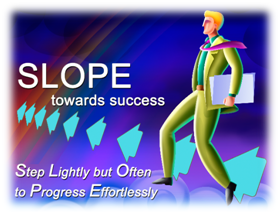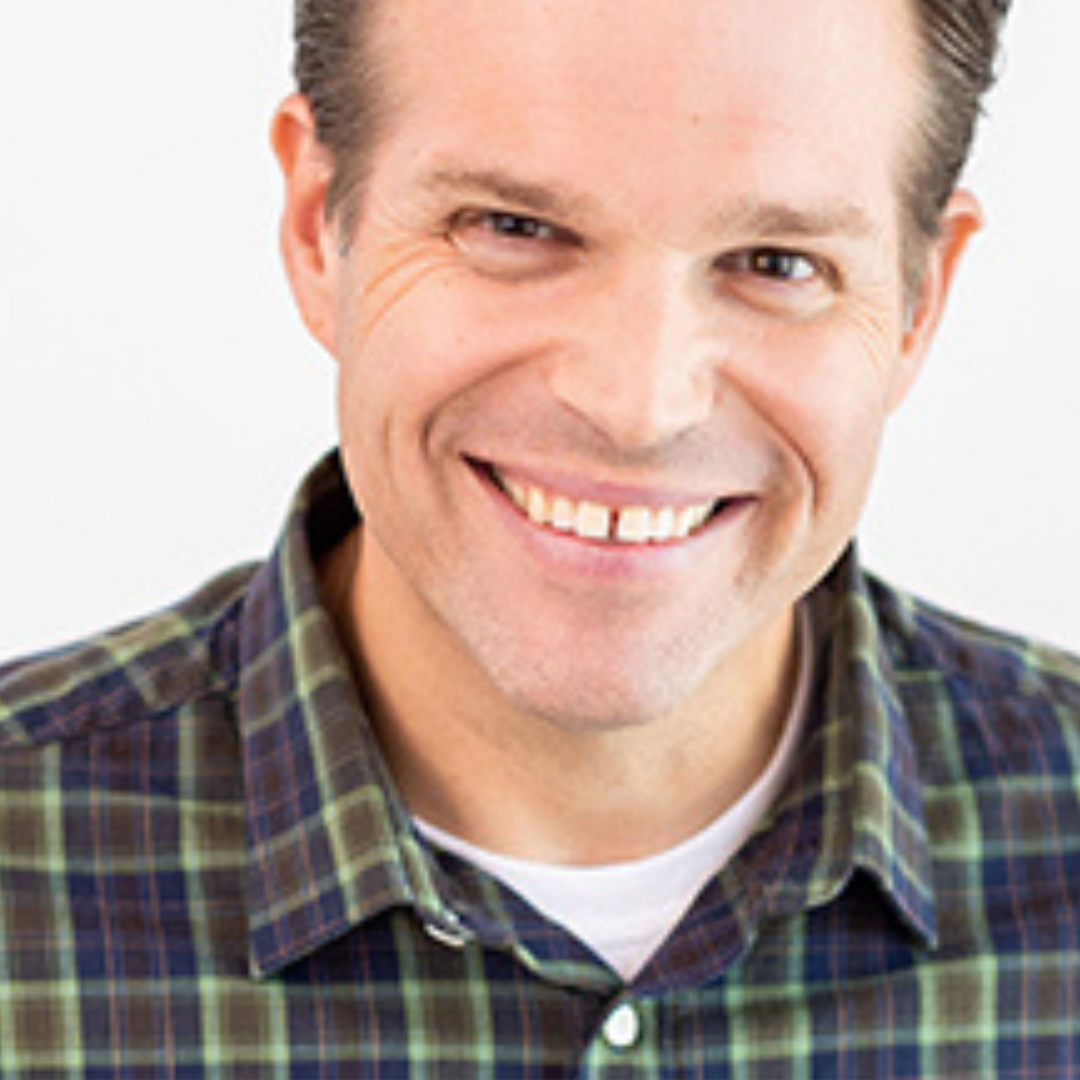A Coaching Model By Peter Verbansky, Life Coach, UNITED STATES
SLOPE – Step Lightly but Often to Progress Effortlessly
A New Coaching Model for Clients to Step Lightly but Often to Progress Effortlessly Towards Their Desired Career or Corporate Outcomes
Progress is key, achieving better today than we did yesterday, but not necessarily ever crossing the proverbial finish line. Career and corporate success can rarely be defined with any finality, but more with the creation of new goals, innovative objectives, different outcomes, reinvigorated revenue or profitability targets, and perhaps even a complete reinvention of a staling brand. A client looking to succeed at their organization, whether within their current role or with an entirely new opportunity, is simply looking to make progress.
SLOPE Towards Success

The basic premise of using the SLOPE coaching model is relatively straightforward because it simply centers on continuous and momentum-building action, albeit action that is gentle, with possible objectives, and harmonious with their current self-perception. The S.M.A.R.T. goal process created by George T. Doran in the early 1980s [1] recognized the need for any objective to be specific, measurable, achievable, relevant, and timely. His process, while it elegantly captures the need for any objective to not only be focused but also possible, is often forgotten whenever self-development is considered. With SLOPE, goals are intentionally made smaller to not only meet the key requirements of the S.M.A.R.T. goal process but also to feel like getting “there” – whatever or wherever that is to the client – is realistic and ultimately possible.
The idea of goal achievement, whether a person is more process-orientated and just inspired by the doing, or results-orientated where satisfaction for a job well done is found when crossing the finish line, is fundamentally about developing a passion towards a desired outcome. Finding a big enough reason, or “why”, pulls or pushes any achiever through all types of challenges. As Simon Sinek, author of Start with Why: How Great Leaders Inspire Everyone to Take Action, “Working hard for something we don’t care about is called stress: Working hard for something we love is called passion.”[2] The SLOPE model allows us to satisfy both mindsets because it requires doable, but constant action with a steady focus on palatable progress. Most importantly, it never fixates on getting to a specific destination beyond only remembering where it is to correctly point ourselves in the right direction and, more importantly, to continually inspire us to remember our ultimate outcome, the “why” behind all our effort.
SLOPE Defined
“S” is for Step – As Lao Tzu shared in the Tao Te Ching, “the journey of a thousand miles begins with a single step.”[3] The advice can be summarized as an urging to simply begin, to just start, to get going. Simply posing the question to identify “just one thing” a person could do to begin their journey would help uncover that step. The key is to orientate oneself towards the desired outcome and to start planning the approach towards the intended destination, literally one small step at a time.
“L” is for Lightly –There is nothing worse than moving too aggressively towards something new or different. Change triggers overwhelm, doubt, and ultimately fear that leads to inaction. A perceived threat to our current identity or status quo could trigger an amygdala hijack, a concept first coined by Daniel Goldman in his book Emotional Intelligence[4], where rational reasoning is replaced with an emotional reaction to either fight (resist), flight (run), or freeze (do nothing). Stepping lightly allows a client to delicately work around triggering this reaction, never triggering their amygdala to fight for survival.
“O” is for (but)Often –Momentum builds enthusiasm, but it also establishes routines, which lead to habits. Tony Robbins, the motivational speaker, argues that “it’s not what we do once in a while that shapes our lives, but what we do consistently.”[5] Our client needs to take a step in the right direction, but do it very lightly as not to upset the status quo too much, and then do that repeatedly like clockwork to establish a pattern of continuous improvement. Stepping lightly only works if it’s done often, with light effort often versus a big effort at once.
At this point, it’s important to stop and review the trifecta of stepping lightly but often as it relates to the subsequent steps of progressing effortlessly. Typically, the achievement is defined as going from not having to have, as illustrated in the graphic to the right, Figure 1. An individual starts at Point A and wishes to be at Point B. A lot of effort is expended to go from here to there and, like a singular moment in time with an overwhelming level of effort, the thought is that the goal is achieved.
With the SLOPE coaching model, getting to a goal takes a lot more time because of smaller, incremental steps done repeatedly over time to go from where a client is now to where they ultimately want to end up. As illustrated in the subsequent graphic, Figure 2, a person needs to gradually get there, literally sloping towards success instead of taking one huge step toward something new. A ramp connects Point A to Point B, and the lengthier journey limits the fear-inducing effort and allows for adequate time for progress to comfortably occur.
“P” is for Progress –As John Kotter urges in his change management model, we must generate short-term wins, adding “wins are the molecules of results. They must be recognized, collected, and communicated – early and often – to track progress and energize volunteers to persist.”[6] With the SLOPE coaching model, progress is the goal. Achievement comes naturally and eventually, an almost natural evolution of the right habit or continual action, requiring a client to simply focus on and acknowledge the inevitable success that progress brings.
“E” is for Effortlessly –Rounding out the SLOPE coaching model is the desired result of “effortlessly”, a place where finish lines are crossed, and goals are achieved, almost without ceremony and even uneventfully. Steps were taken continually, and progress was measured to gauge the effectiveness of the effort, but the end goal was just a compass to set the direction, not the inspiration itself. As Earl Nightingale said, “The only person who succeeds is the person who is progressively realizing a worthy ideal. It’s the person who says, ‘I’m going to become this and then progressively works toward that goal.”[7]
Momentum and Massive Action
Isaac Newton is credited with the finding that “an object that is at rest will tend to stay at rest. An object that is in motion will tend to stay in motion… A body in motion tends to stay in motion unless acted on by an outside force.”[8] With the strategic application of the SLOPE technique, goal achievement grows into a transformative process that becomes habitual. Few people consider any habit to simply be the momentum of action that is not being acted on by an external stopping power or “outside force”; they are just behaviors people do, as it’s colloquially suggested, like clockwork.
Additionally, we often hear that the path to success comes from massive action taken on a desired outcome or strategic target, but most visualizations of massive action suggest simultaneous or concurrent events, like the destructive image of a military’s “carpet bombing” on a target. When we successfully reframe “massive” as something that happens over time and not at once, allowing for the same emotional reassurance that the mission objective will be achieved but over time and not at once, we can more easily see, hear, and feel that a course of action will lead us to from where we are today to where we want to be tomorrow.
Applying the tempering of the SLOPE technique to a strategy of massive action that happens over time then gently embeds specific behaviors into a client’s daily, weekly, and monthly routines, establishing momentum that allows them to progress effortlessly. In the end, clients should be encouraged to step lightly, but often and empower themselves to progress effortlessly in the days ahead and towards whatever outcome or objective they decide to achieve throughout the success journeys.
Learn How to Create Your Own Coaching Model
Your Coaching Model reflects your values,
philosophies, and beliefs and must communicate who you will coach
and the problems you will solve. Read more about creating your coaching model
References
[1]https://www.reference.com/history/invented-smart-goals-91a96ac7407ac68a
[2]https://www.goodreads.com/author/quotes/3158574.Simon_Sinek
[3]https://www.goodreads.com/author/quotes/2622245.Lao_Tzu
[4]https://www.moonshotdreams.com/amygdala-hijack-the-complete-guide/
[5]https://www.goalcast.com/top-20-inspiring-tony-robbins-quotes/
[6]https://www.kotterinc.com/methodology/8-steps/
[7]42 Of The Most Powerful Quotes By Earl Nightingale
[8]101 Amazing Isaac Newton Quotes on Education and Life
